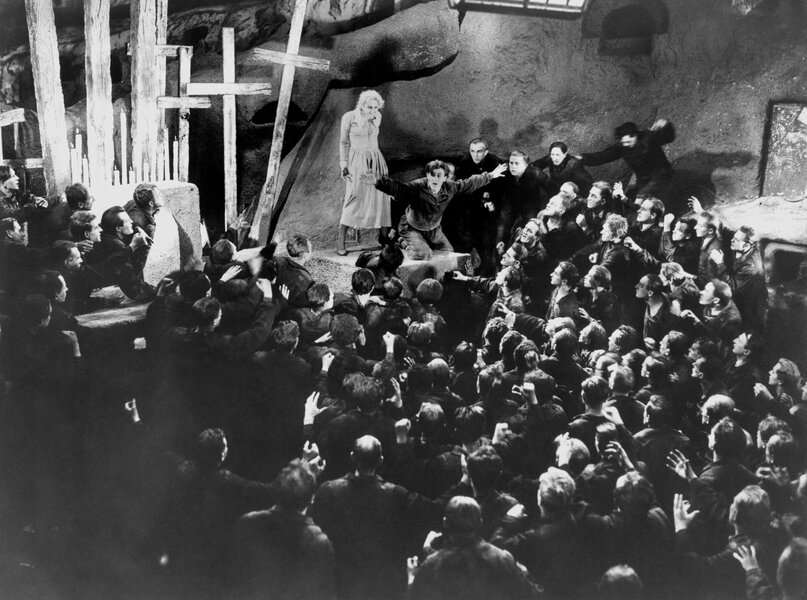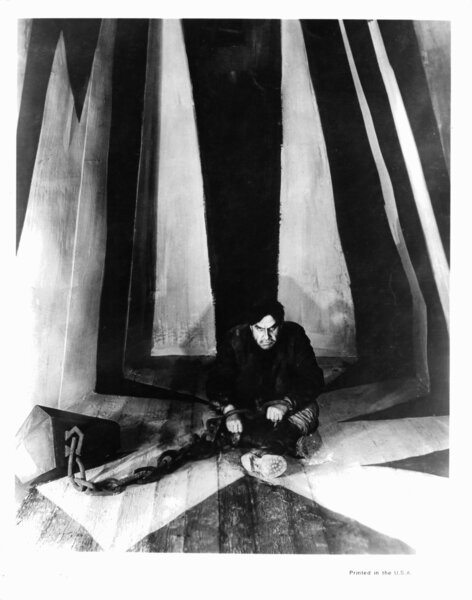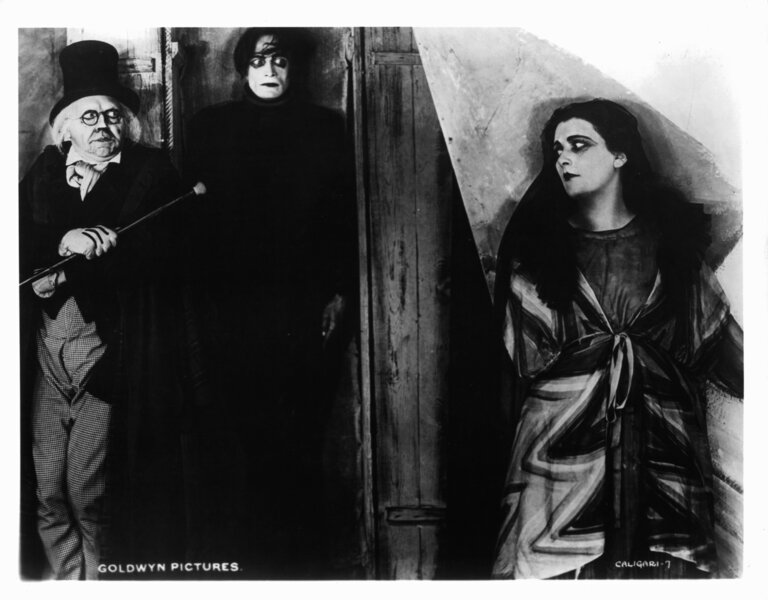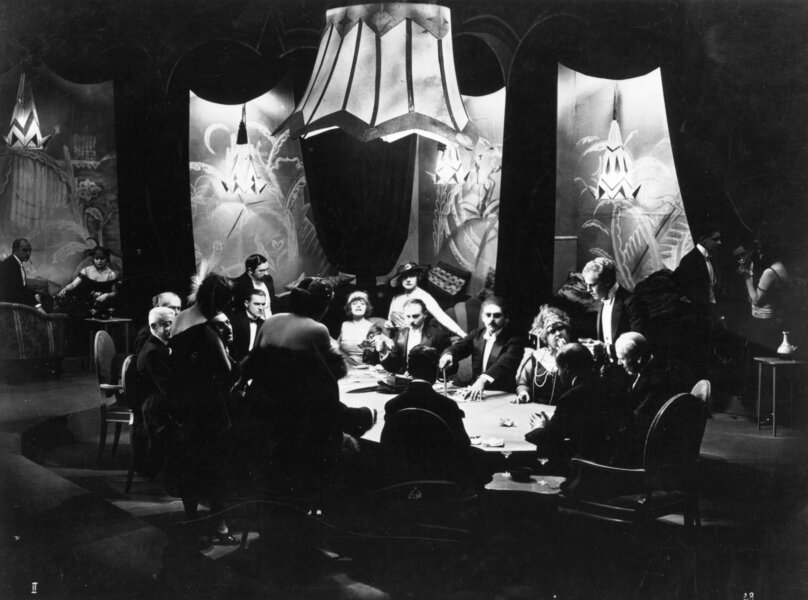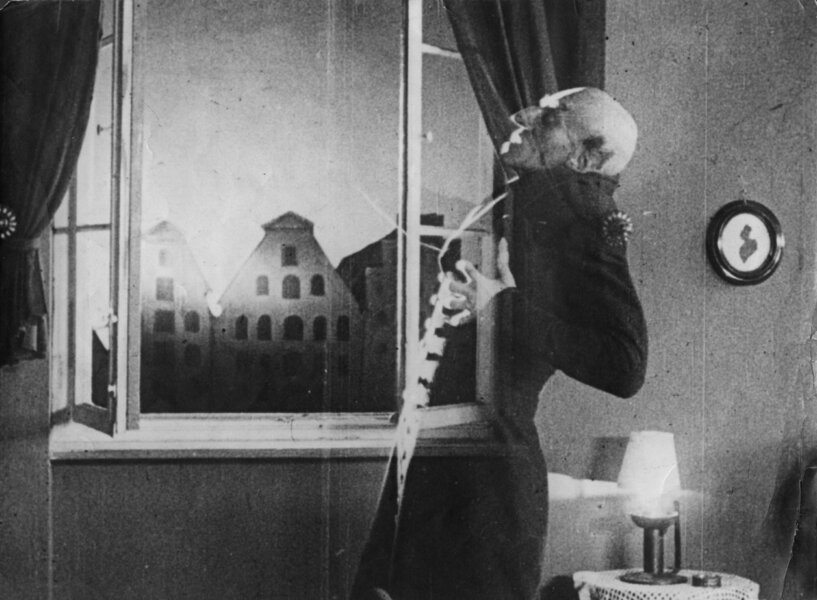Create a free profile to get unlimited access to exclusive videos, sweepstakes, and more!
How German Expressionist movies used monsters to depict a fractured society
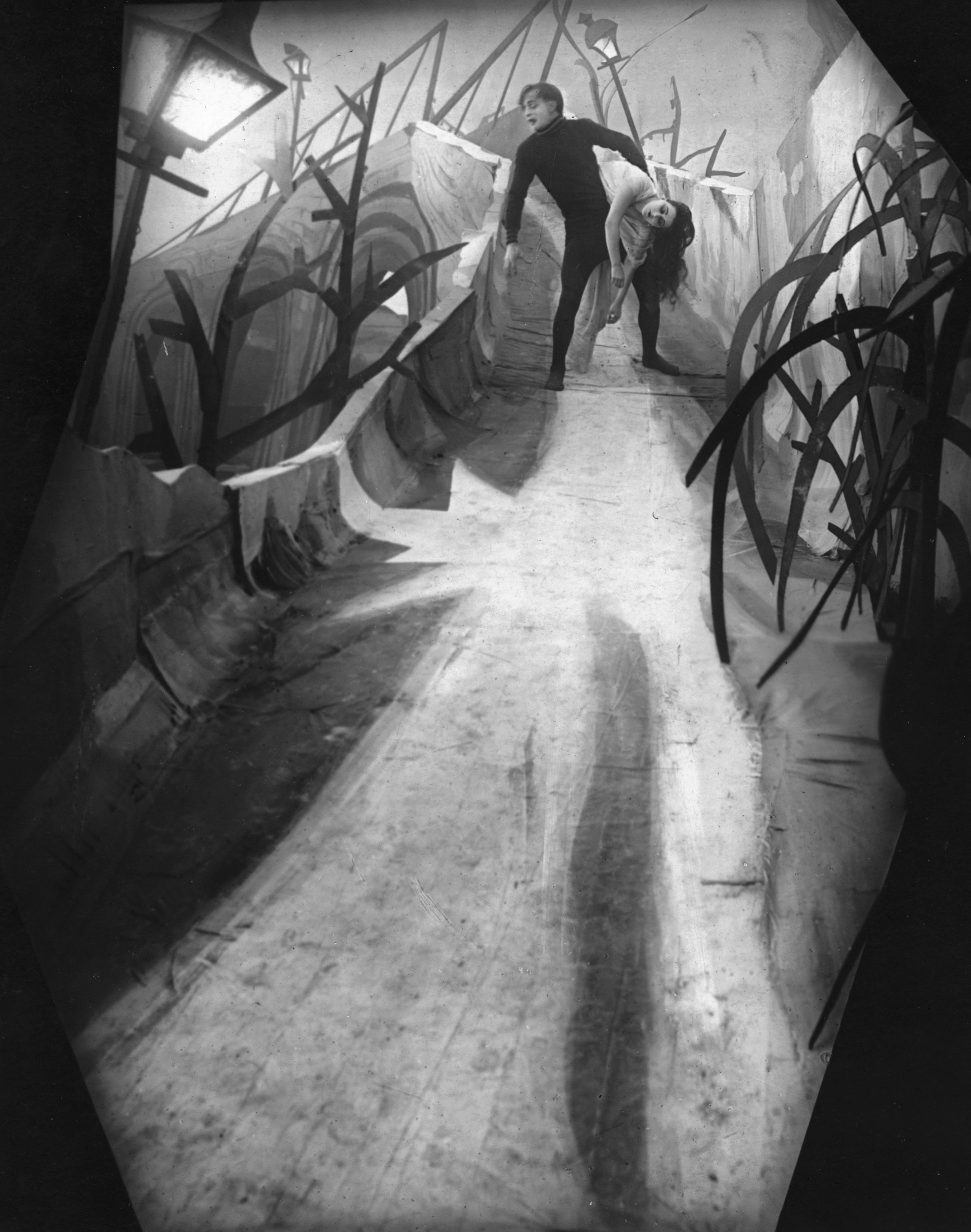
Horror holds up a mirror to the fears gripping society, whether the paranoid suspicion of the Other penetrating boundaries or the monster coming from within. Zombies taking over malls, a tween girl with a demon inside her, or an attack from outer space often represent a broader allegorical idea. In the mid-century, the nuclear war panic provided the foundation for large swaths of science fiction, '80s body horror reflected the AIDS epidemic, and climate change concern colors current narratives. It is unclear how the global pandemic of 2020 will impact storytelling, but no doubt scripts are being written while people are practicing social distancing.
Long before moving pictures, scary stories were told via folklore, campfire legends, and fairy tales — many of which are still a source of inspiration today. In the post-WWI landscape, these cautionary fables led to some of the most inventive and creepy movies, which expanded upon well-known narratives by emphasizing modern concerns.
Weimar, Germany was a hotbed for film production, which was in part made possible by the public funding that was used to bolster UFA (Universum Film-Aktien Gesellschaft) when it was established in 1917. Initially created to make propaganda material to rival other nations, it produced some of the most famous movies of the German Expressionist era, including The Cabinet of Dr. Caligari, Metropolis, and Dr. Mabuse the Gambler. It would later fall to Nazi control, but in the silent film era, production chief Erich Pommer oversaw one of the defining periods in global cinematic history (he was dismissed after the Nazis took power in 1933). During its Expressionism heyday, the deep scars left by the Great War are etched across the screen, revealing a fractured society trying to mourn its dead while dealing with the joys and pressure of modern living.
"A boomtown full of contradictions" is how 1920s Berlin is described in the 2014 documentary From Caligari to Hitler. Excess and sobriety existed in equal measure, which added to the duality of this decade — creative escapism was a byproduct of the hardships caused by inflation and unemployment. Even before the stock market crash of 1929, Germany had been standing on the edge of the financial abyss as a result of reparations imposed upon the country after its WWI defeat.
Cinematic romantic realism and naturalism were replaced by a stylized reaction to the current climate, which took inspiration from expressionist art and theater production design. Instead of trying to recreate how the world actually looked, the set and lighting concept reflected the jagged mood of the nation. Robert Wiene's The Cabinet of Dr. Caligari kicked off this filmmaking movement using extreme light and dark while blending modern myth with folklore. The monsters are both real and imagined.
100 years after its release, Dr. Caligari is still a haunting tale depicting a struggle against authority and the specter of WWI. Sure, the twist ending is one we have now seen countless times but to watch it unfold in one of its earliest incarnations is thrilling. The story coda reduces some of the political tension and ire directed at those in power, but it is still a striking depiction of horror with more to say beyond the onscreen scares.
Cesare (played by Conrad Veidt) is a fairground spectacle, a somnambulist (someone sleepwalking or in a hypnotic trance) representing the German people who are effectively being used as a puppet by those in power. This movie also showcases how mental health was being explored as psychiatry and psychology entered a new defining phase. At the time, the Vienna Psychoanalytic Society was the seat of intellectual progress in Central Europe and had a profound impact on art during this period.
Fritz Lang's most famous work is undoubtedly Metropolis — even if you haven't seen this movie, you will likely recognize the machine-man at the heart of the tale — but before this blistering magnum opus on the power imbalance between workers and those in charge, Dr. Mabuse helped establish Lang's legacy. Appearing in three movies (beginning with 1922's Dr. Mabuse the Gambler), the criminal mastermind uses his psychological background to manipulate and control unwilling subjects via hypnosis and suggestion.
The push/pull between the desire for societal structure and freedom without tyranny is an ongoing theme within Lang's work, which is portrayed here via Mabuse's nefarious schemes. Set in 1929, current drama TV series Babylon Berlin draws heavily on Expressionist movies of this time, which includes a Dr. Mabuse like figure manipulating the influential. Furthermore, Babylon Berlin mirrors the way Expressionist movies of the 1920s depicted the clash between hedonistic living and the political tension, as well as the concept of the man-machine.
The latter is a phrase that is repeatedly used in Metropolis to describe the creation at the heart of the action. A social critique of the seemingly neverending economic crisis — which was only going to get worse — Lang's incredibly ambitious movie showcases a world of working-class horrors as those above ground dance the night away. But even the workers are not painted as wholly good when they forget their children (who are nearly drowned) while they trash the machines causing them so much hardship. The younger generation is paying for their parents' reckless behavior during the Great War and the inability to fix the fractured society struggling to find its own identity.
One theme uniting the work of Lang and Wiene is authoritative figures and scientists unleashing their monsters on the world with little or no regard for the common man. It is a period of technological and scientific discovery, but the future has a giant question mark hanging on the horizon as the battle for political control overshadows youthful vibrancy and the possibilities of this new era. The growing dread brewing could be considered our contemporary projections because we know what is coming, but the growing schism is evident in the kinds of monsters and dystopian scenarios that haunt this period of filmmaking.
Vampires seem old hat in 2020, but when F.W. Murnau's Nosferatu was released in 1922, it had been less than 30 years since Bram Stoker's Dracula had first been published. It is easy to see why a blood-sucking monster would resonate so much at a time when people had so little. Murnau used real locations rather than an all-studio set, which blends Expressionist sensibilities with Romanticism but the stylistic nightmare is emphasized as the movie progresses. Despite being ordered to destroy all copies of the movie after they were sued by Stoker's estate, thankfully the movie survived to be one of the most iconic of this period. Two years before Nosferatu's release, Robert Wiene had followed up Dr. Caligari with the far less impactful Genuine which told the story of a succubus who tormented men, but it was actually all a dream. Maybe audiences decided this cop-out ending didn't hold much weight even when movie making was in its infancy?
Horror and science fiction owe a great debt to the work of Wiene, Lang, and Murnau. Filmmakers including David Lynch and Tim Burton draw on surreal and stylized elements that feel like fever dreams, which have their roots in the German Expressionist post-WWI period. But it is also a vital archive of the way the world was during this time of great change and innovation. It gives us a glimpse at the immense possibilities of art in the 1920s, but the dread about the future and the open wound of the past are impossible to ignore. These movies act as a snapshot of a turbulent time in history, revealing how horror and science fiction act as an alternate language when words will not suffice.100 years later, we can hear them loud and clear.
